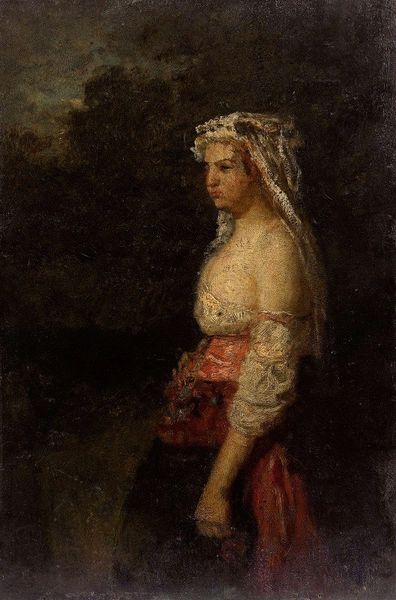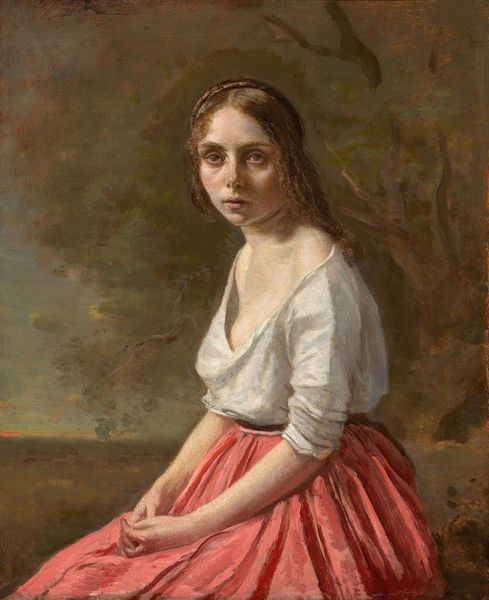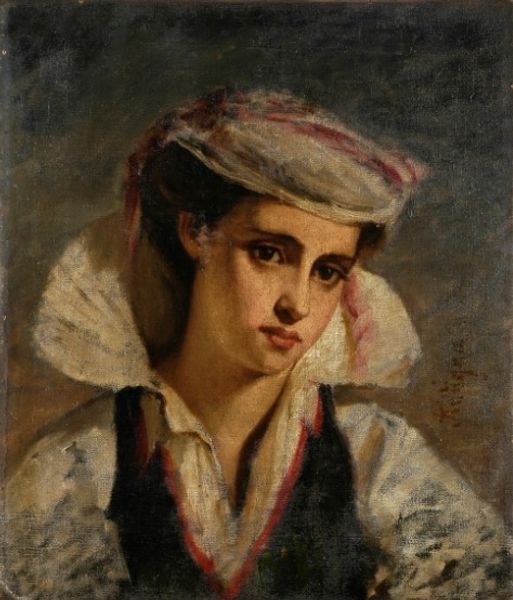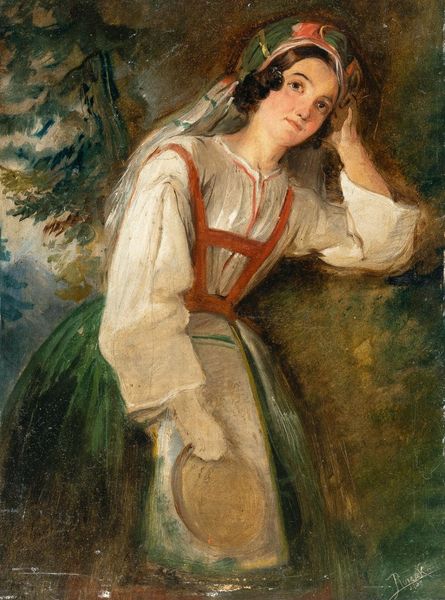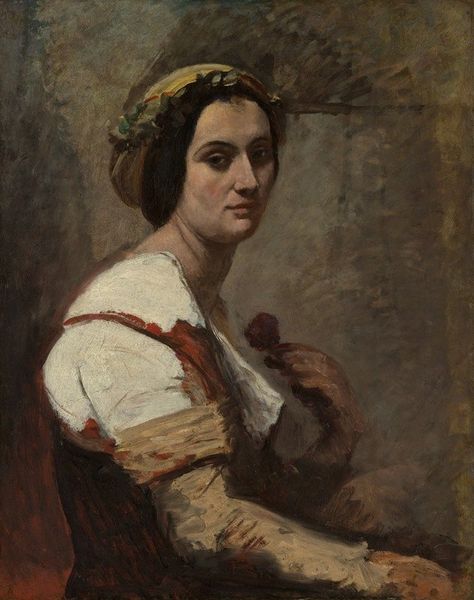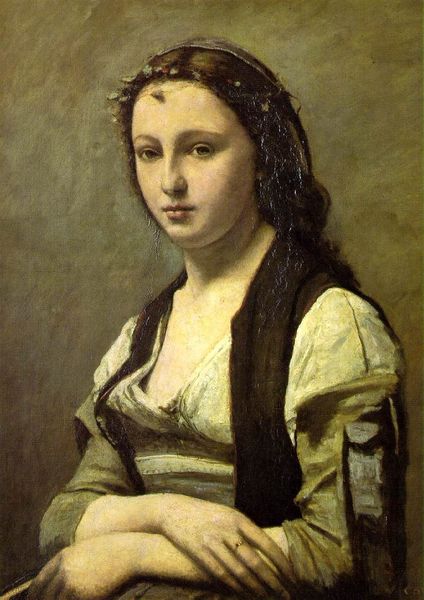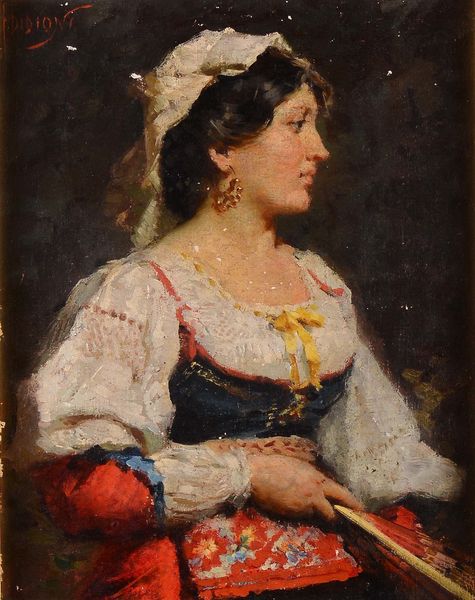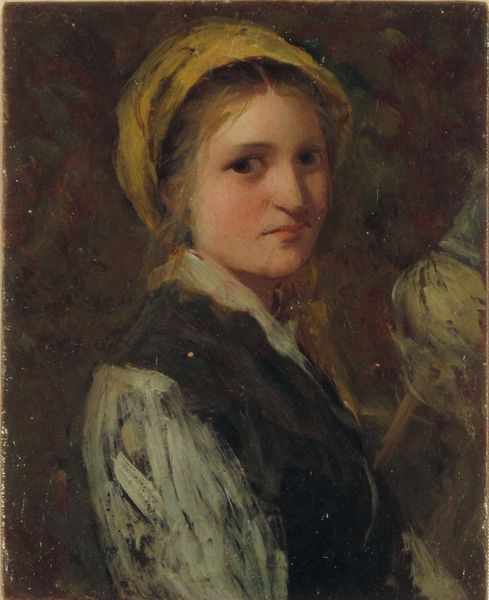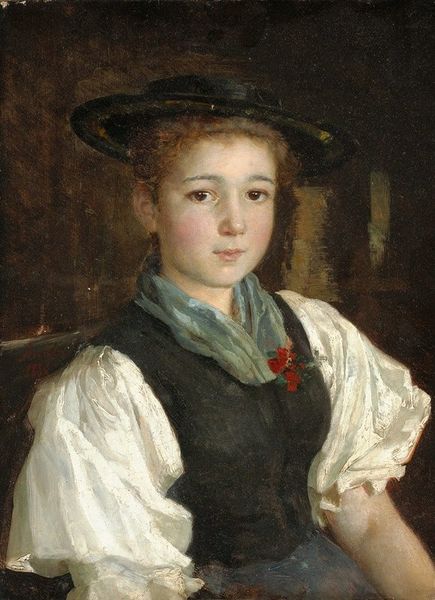
oil-paint
#
portrait
#
figurative
#
oil-paint
#
oil painting
#
romanticism
#
genre-painting
Copyright: Public Domain: Artvee
Narcisse-Virgilio Diaz painted "Bohémienne au tambour" in France, a period of significant social change and romantic interest in marginalized communities. The term "bohémienne" itself is loaded, historically used to refer to Roma people, often associated with a nomadic lifestyle and perceived exoticism. Diaz's painting participates in this romanticized vision, presenting the woman with a certain melancholic beauty, her gaze directed upward as if lost in thought. The tambourine is a cultural reference, evoking music, dance, and a sense of freedom. It's worth considering the socio-political context of mid-19th century France. The rise of industrialization and urbanization led to increasing social stratification, contributing to the fascination with those living outside mainstream society. Artists, writers, and intellectuals often sought inspiration in the lives of the so-called "bohemians," sometimes idealizing their independence but other times casting them as social outcasts. To fully understand this painting, one could research the representation of Roma people in French art and literature of the time, and also consider the institutional structures that shape these representations. We might ask: Does the painting challenge or reinforce existing stereotypes? What role did art institutions play in shaping public perceptions of marginalized communities?
Comments
No comments
Be the first to comment and join the conversation on the ultimate creative platform.
